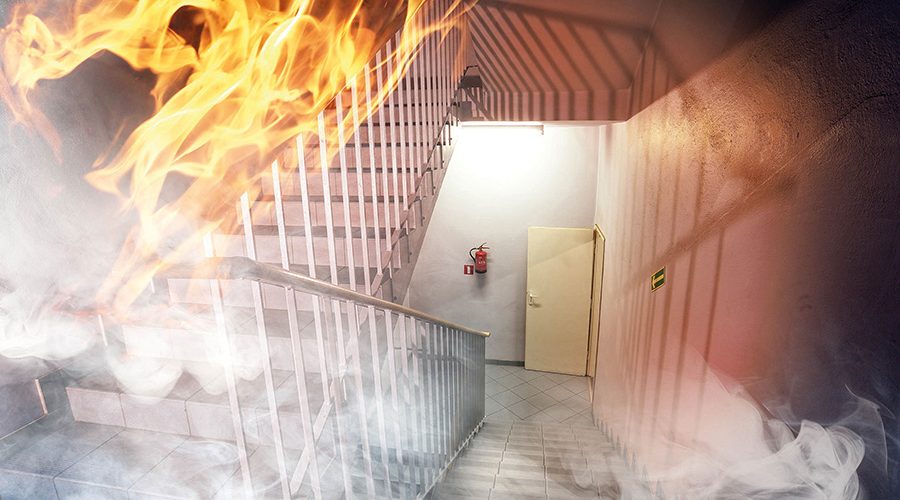The importance of fire safety has been at the forefront of the public’s and industry’s consciousness following the devastating Grenfell Tower tragedy. The Hackitt review, as well as the enhanced media scrutiny on the subject, has rightly resulted in a far more comprehensive assessment of fire safety measures and processes.
Ingleton Wood

Scott Barlow is Director of Building Surveying at Ingleton Wood. He specialises in professional building surveying services. Barlow’s core skills and experience lay within the fields of dilapidations and due diligence advice.
According to leading multi-disciplinary construction and property consultancy Ingleton Wood – which specialises in services for the public sector – a number of fire safety requirements are sometimes unwittingly overlooked by those that are responsible for estates and facilities.
Fire risk assessments and compartmentation plans are required for all properties and keeping them up to date and fit for purpose is essential.
Scott Barlow, Director of Building Surveying at Ingleton Wood, says: “It is important to reduce the confusion that currently exists when it comes to fire knowledge and more specifically fire risk assessments. Property managers need to be aware of their ongoing responsibilities.
“A property’s fire risk assessment should be a live document which is checked on a regular basis. If any alterations are made to a property, the assessment should be reviewed. Often, we find that this is not being done.
“In the event of an incident, building insurers will always look at how a fire has spread, so it’s vital that plans are up to date and fit for purpose.
“In hospitals – because patients can’t be moved too quickly – fire safety and compartmentation plans will often be zonal, preventing the spread of fire and loss of life. Where the plan isn’t available, it is often a challenge to establish how the building was originally designed and zoned. Particularly if it’s an old building where the original strategy is unknown. We’re quite often asked if we can put together a fire safety plan retrospectively, but that is very difficult.
“In schools, evacuation is often quicker; the issue then becomes about saving the building. But, increasingly we are finding that insurance policies are at risk because fire safety and compartmentation plans are not up to scratch.”
The role of the property manager is vitally important in relation to the overall fire safety of a building. There are many factors to consider which could affect the fire safety of a property, including work carried out by external tradespeople.
Scott continues: “Unsupervised contractors can sometimes damage fire barriers – something as simple as running IT cables through a ceiling or a wall, for example, can have a significant impact. The property manager should be aware of their responsibilities and should manage these situations to ensure all work is completed correctly.
“We are also finding that fire-rated foam is being seen as a solution to making good penetrations in fire barriers in an attempt to comply with fire regulations. The Association for Specialist Fire Protection advises that foam is the last option to be used. The method often leaves gaps which makes it ineffective and the property is, therefore, at risk.”
Fire doors are an integral part of a property’s fire risk protection and general safety. They are often downgraded when specified or neglected during their service life. It is important to ensure that the correct installation and maintenance is carried out to properly guarantee their performance.
Scott added: “We see many examples of poorly installed fire doors. The measurements only need to be a few millimetres out to make the door ineffective and negate the presence of an intumescent strip.
“Fire doors should be inspected on a regular basis for damage. This is particularly relevant where doors are subject to a lot of wear and tear. It is also important to note that any additional fixings to a door, such as doorbells or digital locks will mean the door is no longer certified as a fire door.”
Ingleton Wood is a multi-disciplinary property and construction consultancy and offers a range of advice on fire safety measures including reviews of current arrangements, recommendations for further improvements and the project management of remedial solutions.






